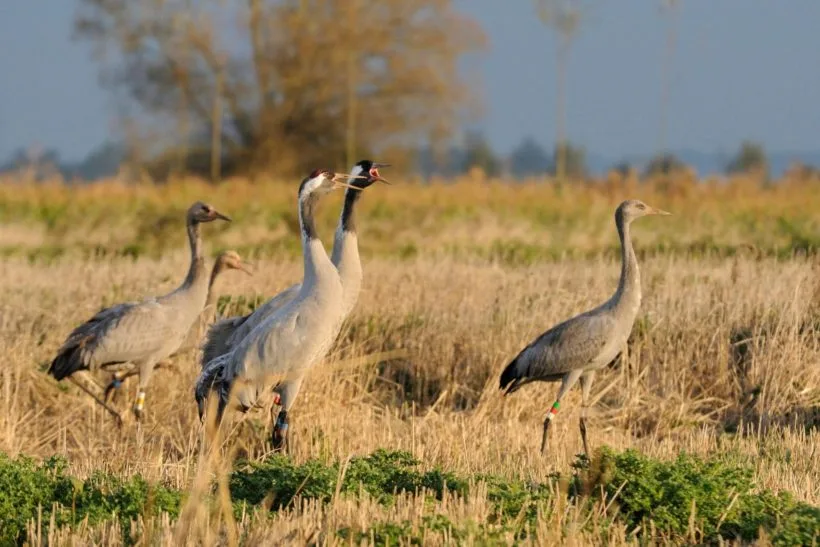A new breeding survey has found that 2021 was a record year for the common crane, with 72 pairs across the UK and the population at its highest since the 17th century.
Cranes became extinct in the UK around 400 years ago, but are making a strong comeback with more than 200 birds recorded last year. This is the highest number since the birds returned in 1979. A small number of wild birds returned to the UK and colonised an area of the Norfolk Broads before spreading to other areas of eastern England and elsewhere in the country.
Of the 72 recorded pairs, up to 65 pairs bred and these fledged 40 chicks; the next highest number of young fledged previously was 26 in 2019.
Damon Bridge, chair of the UK Crane Working Group, said: “The crane population is rapidly expanding. Although climate change poses a huge challenge for many species – opportunities to restore peatlands and floodplains to reduce carbon emissions and better manage increased flood risk can go hand in hand with the delivery of habitats perfect for cranes and other wetlands species.”
Conservation efforts by the Great Crane Project – a partnership between the RSPB, WWT and the Pensthorpe Conservation Trust – on peatland restoration and wetland protection has significantly contributed to this recovery. As well as creating and improving existing habitat, the project has hand-reared young birds and released healthy numbers of cranes on the Somerset Levels and Moors.
Chrissie Kelley, Pensthorpe Conservation Trust’s head of species management, said: “It is fantastic to hear of the continuing success story of crane conservation in the UK and the vital role that the Great Crane Project has played. As a flagship species for wetland conservation and restoration, the efforts to restore crane numbers will also have a lasting benefit for so many other species, which rely on this important habitat.”
For more on the Great Crane Project, visit: www.thegreatcraneproject.org.uk


